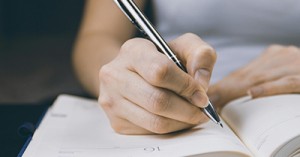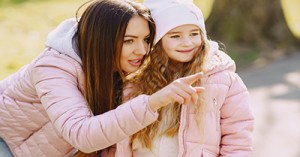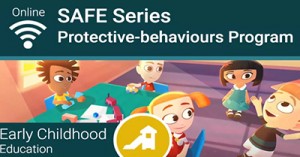Change tables are nursery furniture items used when changing babies’ nappies. The tables are made of either metal rods or wood. The nappy changing surface, cloth or foam covered with vinyl, is held in place, approximately one metre above the ground, by the supporting metal or wooden frame. Change tables may also have shelves underneath the changing surface for storage of nappy changing essentials such as nappies and wipes. Some metal framed change tables double up as baby baths and hence have a bath accessory.
Change mats are vinyl covered foam cushions with raised sides or thin vinyl mats that may be used on flat surfaces (low to the ground) to change a baby.
How may children be injured when using change tables and mats?
Entrapment
- Children may become trapped if the frame of a folding change table collapses as a result of not being locked properly or due to a fault in the locking mechanism.
- Fingers and toes can be caught in gaps on the sides of the change tables.
Falls
- Unsupervised babies and children can roll or push themselves off the change table.
- Older more active infants can push or roll off the change table if the sides are left down and the carer is unable to control their excessive movement.
- If the wheels on a change table are not locked, the table may roll away due to baby’s movement causing the baby to fall.
- Older, active children can cause light-weight metal framed change tables to flip over. The same may occur as a result of the change table being overloaded with products causing the table to tip over.
- A child may sustain a fall as a result of attempting to climb onto the change table using the shelving as a ladder. An older child attempting to climb while a younger child is on the change table may result in injuries to both children.
These risks also apply to babies and children on change mats placed on higher surfaces, tables and bench tops.
How common are these injuries?
Change tables have been associated with entrapment and falls injuries in babies and young children. The injuries are usually a result of children falling off the change table. Falls from greater than 1.5 metres can cause significant injuries in babies and children. 12% of injuries from nursery furniture treated at The Children’s Hospital at Westmead in 2004 involved change tables.
Is there a law or an Australian Standard for change tables and mats?
There are no laws or Australian Standards relating to change tables. Please keep in mind the safety reminders below when choosing a change table.
Remember
- When purchasing a change table:
- Ensure that it is stable and of solid construction.
- If the change table is on wheels, make sure the wheels have an effective locking system.
- Buy change tables with roll off protection, such as raised ends and sides over 100mm in height.
- Avoid tables with gaps near the changing surface that can trap fingers and toes.
- Look for tables with safety harness features.
If you are purchasing a second-hand change table, make sure that it is stable and in good condition. Again, choose a change table with the protections outlined above.
- Before each use, make sure collapsible frames are locked securely in place.
- If a safety harness is available, restrain your child every time he/she is on the change table.
- If you are using a change mat, place it on a surface low to the ground or better yet, on the floor.
- Ensure you have all the changing equipment assembled before you start changing the child.
- Never leave a baby or child unattended – ignore distractions such as the telephone. There is no substitute for adult supervision.
- Never assume your baby is too small to roll or move. Even a very young baby can wriggle off a change table.
- Ensure potential poisons, ie, creams and lotions and choking hazards are stored away from the top of the table.
- Do not encourage or allow other children to climb onto the frame. The added weight can weaken or tip the table.
- Do not overload the carry pouches or shelves on the sides of the table, these can be tipping hazards.
References
ACCC keeping Baby Safe Guide to Nursery Furniture (2006) Commonwealth of Australia http://www.fairtrading.nsw.gov.au/pdfs/About_us/Publications/ft281.pdf
Aussie Childcare Network acknowledges the co-operation of The Children’s Hospital at Westmead, Sydney Children’s Hospital and Kaleidoscope, Hunter Children’s Health Network in making this fact sheet available.
Disclaimer: This article is for education purposes only. Please consult with your doctor or other health professional to make sure this information is right for your child.










